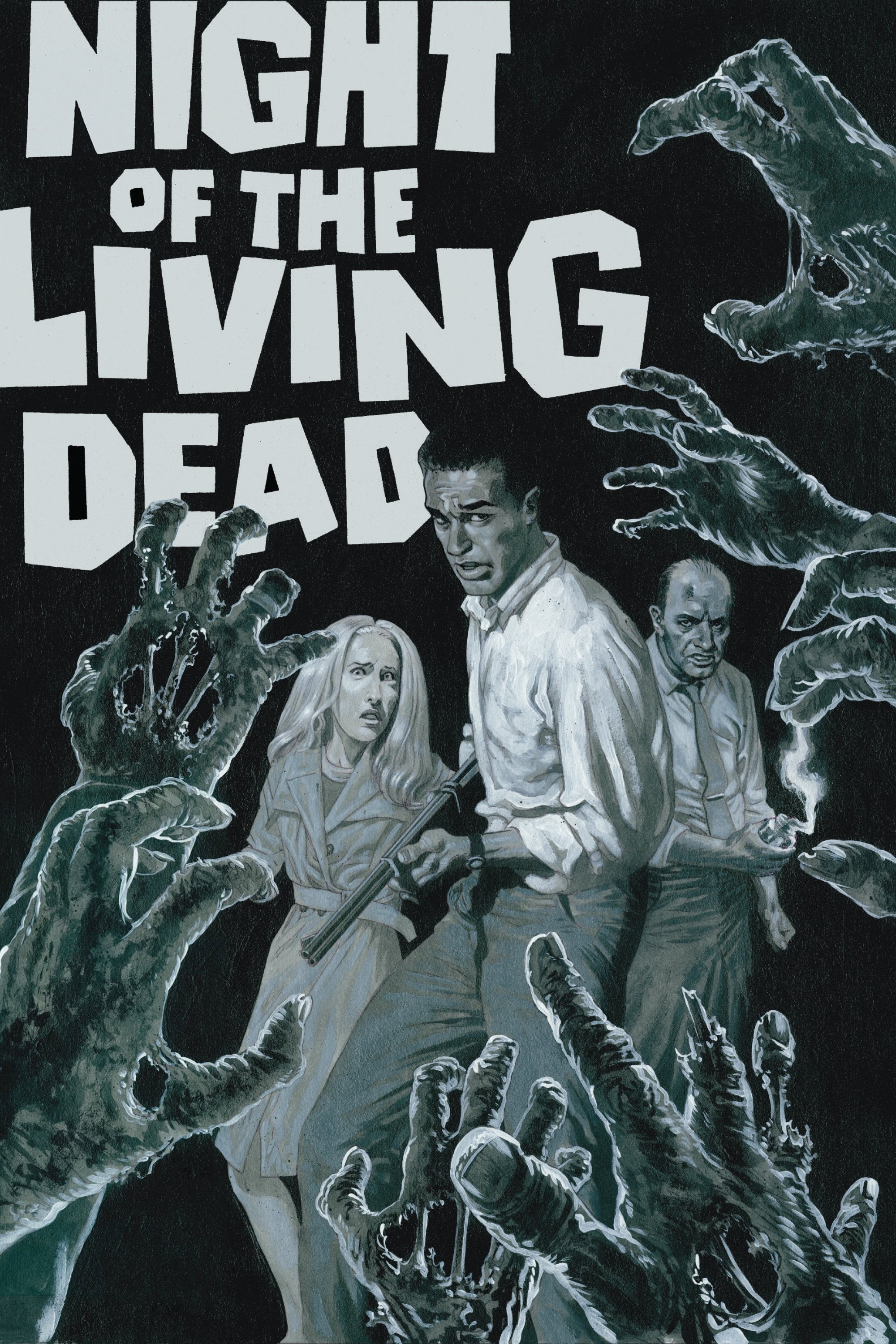
Night of the Living Dead
Rating: 5/5
By: Nathaniel Simpson
The scariest thing about George A. Romero's Night of the Living Dead, which was released 57 years ago today, is not the zombies or them ripping apart the humans who are trying to survive. It is the white men killing the only black character in cold blood, and then proceeding to put hooks into him and burning his body. This is one of the various social and political commentaries Romero put throughout his film, which is considered the first modern zombie film by presenting the tropes of the slow-walking undead that feast on the flesh of the living. Romero's film has not only set the precedent for zombie movies ever since its release in 1968, but also presented such political issues and social issues in such a way that makes it even more terrifying than the imagery of the undead.
The zombie flick follows a group of seven people who are trapped in a farmhouse when the zombie apocalypse breaks out: Ben (Duane Jones), Barbra (Judith O'Dea), Harry (Karl Hardman), Helen (Marilyn Eastman), Karen (Kyra Schon), Tom (Keith Wayne), and Judy (Judith Ripley). With all of them not too sure how to proceed and stay safe when the undead starts rising up and killing innocent people, they argue and bicker on how to proceed, causing unrest in the house and tensions to rise as the dead gets closer and closer to their only sanctuary.
Romero only had $100,000 to work with, and the inability to obtain a proper filming set. Therefore, to work on the limited budget and having to find a place to shoot his film, Romero uses guerrilla filmmaking tactics and bought a condemned farmhouse that they could actually destroy during the filming of this movie. Because of this, they had to get a lot right on the first takes and really keep careful consideration when making this film. They simply didn't have any room for error, and I think that is what makes Night of the Living Dead work so well.
Because of these filmmaking techniques and their limited budget, Romero is able to capture the perfect gritty aesthetic of this movie. Zombies are dirty and disgusting, and Romero is able to showcase these characters and this setting they find themselves in in a way that stays true to these now-iconic scary characters. From the cinematography to the little-to-no lighting effects, this picture is able to develop this terrifying atmosphere that Romero was hoping for, and I think he would have lost this effect if the movie was shot with a bigger budget, on a real set, or in color.
The performances here are all done quite well, and it showcases the acts of humans turning on each other and chaos due to a life-or-death situation. Romero casts a black man as our main protagonist here, a decision that wasn't very popular when the film was released, and he gained a lot of controversy for his decision. But, I think by casting Jones in this role, it opens the story up to a whole new perspective of the racial injustice going on at this time. Would the character of Harry, a stubborn white father, have respected the character of Ben as a person if he was white?
This is one of the social commentaries made by Romero, which I think works so well on every level. The effects of racism aren't fully realized until the end of the film, where Ben is the only surviving character and then is shot in the head simply because the white men thought he was a zombie. Like I mentioned, seeing them standing over Ben's dead body and putting hooks into his skin easily makes your stomach turn due to the emotionless performances given by the actor. Romero not only meant to tell a zombie flick, but also wanted to tell a scarier story that is racism during this time in America. However, even though this movie is now 57-years-old, we are still facing such racism that Romero was warning against in his breakout film.
Another political commentary Romero hints at is the looming threat of the Cold War at the time, with the misinformation serving as a source of the anxiety people were feeling during this time. You can also view the zombies as being a critique of late-stage capitalism and their dehumanizing ways due to their cannibalistic acts. There is a lot to unpack in this story that Romero wanted to tell, and it shows how well-crafted this movie is considering many zombie films lack these sort of commentaries. Zombie movies nowadays simply just want to scare the viewer based off the grisly and disgusting behaviors of the walking undead, while Romero wanted to make the viewer think about what they are watching when seeing zombies attack the living.
Night of the Living Dead is one of those movies that is a perfect product of its time, presenting a thought-provoking horror tale that has inspired a whole new line of zombie films. Romero's movie will always be considered the start of the modern zombie era, but there is so much more to unpack from this film that shouldn't be ignored. Romero was ahead of his time as a filmmaker, and this picture is just a clear example of his genius that transcended the time this movie was released.
Comments
Post a Comment